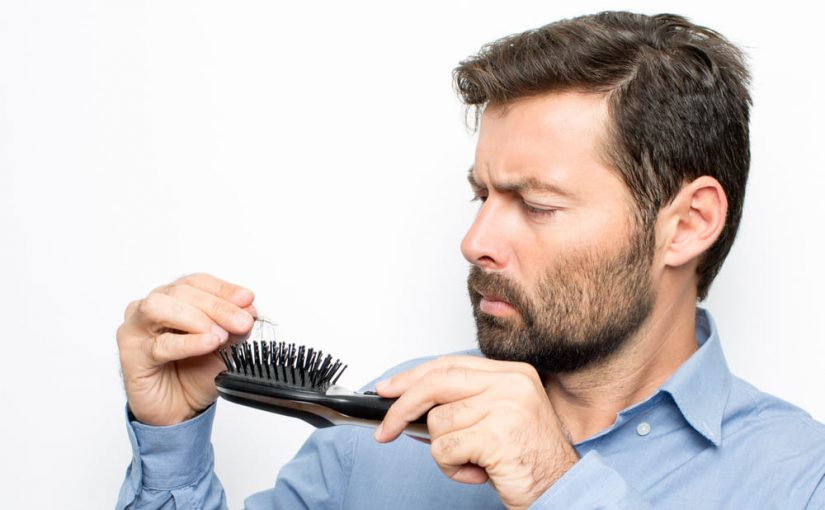Is Taking Finasteride Worth The Risk?
What does Finasteride do?
- What does Finasteride do?
- How does Finasteride work?
- How much Finasteride should I take?
- The Dosage:
- How long Finasteride takes to work/ to see the results?
- Finasteride Starts Working in Months 1 to 3:
- Months 3–6: Initial Findings
- Month 12: Notable Progress
- What happens to my hair if I stop taking Finasteride?
- Can Finasteride cause permanent damage?
- Will Finasteride regrow hair?
- What happens when you stop taking Finasteride Propecia for 10 days?
- Why?
- Finasteride for Women:
- Is it worthwhile to take the risks?
- Finasteride and Minoxidil:
- Take-home message:
- Related Articles:
Finasteride is a drug that is used to treat hair loss. It is an FDA-approved prescription medicine for the treatment of androgenetic alopecia, also known as male pattern baldness. Finasteride is also known as Propecia or Proscar.
It is marketed under the brand name Propecia by Merck & Co., a pharmaceutical business. It was first licensed by the FDA under the brand name Proscar as a treatment for benign prostatic hyperplasia, or BPH, a kind of non-cancerous prostate enlargement.
It was approved for hair loss and released as Finasteride Propecia a few years later. It is now available as generics under a variety of brand names, including the higher-dose version used to treat an enlarged prostate gland and the lower-dose version used to cure hair loss.
How does Finasteride work?
Finasteride tablets are part of a class of drugs known as 5-ARIs or 5-alpha-reductase inhibitors.
Finasteride Uses: It helps in blocking the enzyme 5 alpha-reductase, which is responsible for converting testosterone into the hormone dihydrotestosterone (DHT).
DHT is a key player in the development of male pattern baldness. DHT can connect to receptors in the hair follicles and cause them to miniaturize, resulting in a gradual loss of hair around the hairline, crown, or over the scalp if a person is genetically predisposed to hair loss.
It reduces the quantity of DHT in the system by inhibiting the 5 alpha-reductase enzymes, protecting the hair follicles from DHT-related damage. This can cause hair loss to slow down or possibly halt entirely.
After starting Finasteride hair regrowth treatment, many men see a large amount of hair regrowth in areas of the scalp afflicted by male pattern baldness. So, does Finasteride have any effect? For the vast majority of males, Yes.
How much Finasteride should I take?
Male pattern baldness is a prevalent occurrence. According to research, one out of every six men aged 18 to 29 suffers from moderate to severe hair loss. Around half of all men are afflicted by the age of 40 to 49.
It is an oral drug, used for hair loss. It prevents male pattern baldness by suppressing the hormones that cause it. It can help reduce hair loss and even restore “lost” hair if a person uses it daily.
It is usually taken once a day to treat hair loss. Finasteride can, however, be taken at a lesser dose while still suppressing the hormones that trigger hair loss.
The Dosage:
- The normal dose for an enlarged prostate is 5mg once a day.
- The normal dose for hair loss is 1mg once a day.
- It is frequently taken for a long time. It’s possible that a person has to take it for months or perhaps years.
How long Finasteride takes to work/ to see the results?
Finasteride enters your system fast and begins lowering DHT levels as soon as it becomes active. Its effects aren’t instant because it takes time for new hairs to grow to a visible length. The majority of the time, you’ll see a gradual, continuous improvement in your hair over several months.
Finasteride Starts Working in Months 1 to 3:
It will begin to reduce the quantity of DHT in the system as soon as it is processed by the body. It reduces the quantity of DHT in the system by about 70% on average, which is enough to drastically delay, stop, or reverse hair loss associated with male pattern baldness.
A person won’t notice much of a difference in their hair during the first few months of utilizing Finasteride. The hairline, crown, and overall degree of hair thickness will most likely seem the same as before, with no noticeable changes. This isn’t because it isn’t effective. Instead, the lack of obvious growth in the first few months is simply because your hair takes time to grow.
Months 3–6: Initial Findings
The majority of the time, early Finasteride outcomes are seen after three to six months.
A person may notice that their hair loss has slowed and there is no visible thinning after taking it for this period. They may also see hair growth in specific areas of their hairline and scalp.
Month 12: Notable Progress
A person should notice a further improvement in their hair after 12 months of using Finasteride, which builds on the progress from months three to six. After 12 months of treatment, most trials using it indicate significant, obvious changes in hair count, thickness, and other hair health indices. In certain circumstances, taking it for a year may not result in noticeable hair growth, but it will stop the hair loss from getting worse.
It’s best to speak with the healthcare practitioner if a person hasn’t observed any changes in their hair after taking the medicine for a year. If it isn’t working for a person after this period, it’s possible that continued treatment won’t make a difference in their hair loss.
According to clinical trials, after 12 months, about 65 percent of males treated with this medicine exhibit some degree of enhanced hair growth. Because everyone’s hair is a little different, there are no exact outcomes to expect at the one-year milestone. A user may see a small rise in hair growth or major improvements.
What happens to my hair if I stop taking Finasteride?
After a person stops taking Finasteride, the hair they have managed to save will begin to fall out in the same way it did before they started taking it. Finasteride only works while it’s in the body system, so after it’s gone, the hair loss will resume at its typical rate. If a person had negative effects from this medicine, such as sexual dysfunction, breast soreness, or rashes, they’ll almost always go away once the medication is stopped. This is supported by the majority of studies on Finasteride’s negative effects.
However, a person should be aware of the potential long-term negative effects of Finasteride before beginning treatment. Also, if they experience or are concerned about suffering side effects while taking this medicine, speak with the healthcare professional about these changes.
Can Finasteride cause permanent damage?

A person may lose their sexual ability or desire. This medicine may reduce the volume of semen released during sex in certain men. This is a mild side effect that has persisted in some individuals long after they have stopped taking the medication. It may also help a person develop more hair. Notify the doctor or pharmacist right once if any of these Finasteride side effects persist or worsen.
Finasteride for men has been linked to sexual side effects that can last even after the medicine is stopped. In a clinical study, 20% of men with male pattern hair loss experienced chronic sexual dysfunction over six years, implying that the problem could be permanent.
Changes in cognition, ejaculate quality, and genital feeling was among the symptoms described by these participants. Other drugs, such as phenothiazines, have been linked to irreversible neurological consequences, such as Tardive Dyskinesias.
Will Finasteride regrow hair?

Although some people fear losing their hair overnight, the reality is that male pattern baldness is nearly often a slow process that takes years or decades to complete. If a person’s hair loss isn’t severe, Finasteride may be able to help regenerate hair in parts of the scalp or receding hairline where there is only a little thinning.
Researchers discovered that males who used this medicine to treat male pattern baldness reported a clinically significant rise in their average hair count over two years in a large-scale clinical trial published in the Journal of the American Academy of Dermatology.
The guys had an average hair count of 876 hairs per square inch of balding vertex scalp at the start of the trial. This climbed to an average of 1,014 hairs per square inch after two years of Finasteride treatment or around 16 percent more hair per inch of skin. According to the men who took part in the study, this medication enhanced new hair growth and improved the overall appearance of their hair.
A further long-term trial of Finasteride published by the Tokyo Medical Clinic in Japan indicated that more than 99 percent of individuals with male pattern baldness experienced no worsening of hair loss while on therapy. In the same study, 91.5 percent of the males who used this medicine saw an improvement in their hair growth.
In brief, while not everyone who takes this medicine has their hair regrow, many men find a small but visible boost in hair growth. Hence, it is safe to say that Finasteride regrows hair.
What happens when you stop taking Finasteride Propecia for 10 days?
DHT, or dihydrotestosterone, is a male hormone that shrinks hair follicles. Male pattern baldness is caused by hair follicles that have shrunk and are unable to create hair.
Finasteride works by preventing testosterone from being converted to DHT. DHT levels reduce, allowing hair follicles to become larger and begin re-growing hair. DHT levels will begin to rise if a person stops using Finasteride. As a result, if they stop taking this medicine, the normal balding process will restart, and a person will lose whatever benefits it has provided.
The hair will start to fall out again if a person stops using Finasteride. Its effects aren’t permanent, and a person eventually loses the hair regrowth that had while taking the prescription.
Its half-life is relatively short. So, if a person stops taking the drug, the effects should be gone in seven days, and he may expect a normal rate of hair loss (what they had before taking the prescription) to recover.
Why?
The body won’t be able to block 5-reductase, the enzyme that turns testosterone to DHT if a person doesn’t take Finasteride. It is the best buddy if a person wants to avoid hair loss, retain what they have, and even regrow additional hair. Talk to a doctor about additional ways to support the health of your hair follicles and scalp, such as using a topical hair loss medication like Regaine or taking other supplements, to help with male pattern baldness.
Finasteride for Women:
Even though it is not commonly prescribed for women, it has the potential to harm an unborn child. If the spouse is taking Finasteride, use a condom when having intercourse. It is absorbed at modest levels by the sperm.
If a woman thinks she might be pregnant, don’t touch any crushed or broken Finasteride tablets. If handled with broken pills, it can enter the system through your skin. This is why the tablets have a protective layer on them.
Is it worthwhile to take the risks?

If questioned, taking Finasteride is worth it, the answer is YES. The following facts must be emphasized:
It is the most effective treatment for androgenetic alopecia and the only one that addresses the base of the disease; it has been demonstrated to work. Hence, busting all kinds of myths about Finasteride and proving them in the clinical trials that this medication helps beside chances of risks.
Several investigations have demonstrated its safety over a lengthy period. The recommended dosage (1 mg) is very modest and unlikely to create any negative effects. Even in cases when adverse effects were recorded, researchers discovered that the modifications were reversible.
There are now no oral alternatives to Finasteride; the treating physician should provide complete information about the drug so that the patient can make an informed decision.
Any patient with a history of oligospermia, or infertility, should avoid the medicine, especially if he is recently married and seeking to start a family.
Finasteride and Minoxidil:
Small-sized hair follicles and higher amounts of a male hormone, which is thought to promote excessive hair loss and slow hair growth, are found on the balding scalp in men. Because Minoxidil is a vasodilator, it improves blood flow to the hair follicles by enlarging the blood vessels. This stops hair loss and encourages regrowth, producing longer, thicker, and more hair.
A 5-alpha-reductase inhibitor is Finasteride. By blocking the scalp’s synthesis of a male hormone that inhibits hair growth, it reverses the balding process and stops future hair loss. Combining Finasteride with other therapies like Minoxidil and a hair loss prevention shampoo will help to get the best results.
Take-home message:
Finasteride begins to work right away. However, because the hair follicles need time to start growing new hairs, it can take three to six months before a person notices a difference in their hairline or hair density. It normally produces some results after six months of consistent daily treatment, with more definitive outcomes usually appearing after a year.
Finasteride is usually prescribed at a dose of 1mg per day to treat hair loss. This dosage is useful in reducing or preventing hair loss studies. It may even lead to regenerating hair in places of the scalp where there has been substantial thinning.
It is fine to cut Finasteride dosage if a person is experiencing side effects at 1mg per day. Finasteride dosages as low as 0.2mg per day are useful in preventing hair loss, however not as effective as the standard 1mg per day dosage.

